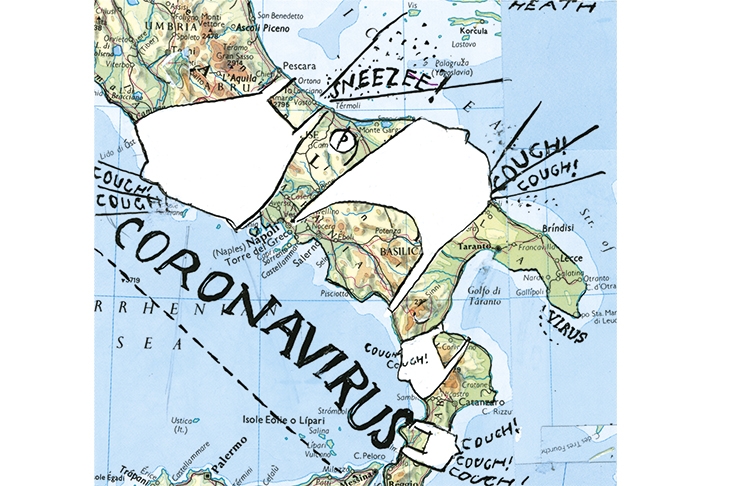The rise of the face mask has been one of the remarkable features of the later period of the Covid-19 epidemic. Yesterday, France announced that face coverings are going to become mandatory in workplaces where more than one employee is present. It is quite a cultural change for a country that previously banned face coverings in public.
Could mask-wearing have been used as an alternative to economically-ruinous lockdown?
Compulsory masks in shops are becoming the norm around the world – and in many cases the obligation now extends to the streets and other outdoor public places too. Until a few weeks ago, UK government advisers were very cool on face masks, with deputy chief medical officer Jenny Harries suggesting they could even make things worse, by trapping the virus behind the mask. Figures released yesterday by marketing intelligence firm Kantar suggest that commercial interests were right to be wary of the effect on masks on their businesses — there were two million fewer visits to supermarkets in the last week of July than expected.
The rules demanding face masks in Britain seem to have come remarkably late – if it is worth wearing them now, shouldn’t we have been wearing them in February and March when the virus was at its most active? What of the early adopters of face masks: how have those countries fared during the pandemic? Vietnam started early, making masks compulsory in public places on 16 March. It has had one of the lowest death tolls of any country, with just 26 so far. In Europe, the Czech Republic was among the first countries to make them obligatory – in shops and on public transport on 18 March. It, too, has seen relatively few deaths, at 37 per million inhabitants – compared with 609 for Britain, 613 for Spain and 586 for Italy.
Bosnia and Herzegovina was the first country in Europe to extend compulsory facemasks to outdoor public places, on 29 March. But its record on Covid-19 has not been so good as some early adopters, with 151 deaths per million. Colombia made people wear facemasks in shops, on public transport and at outdoor markets from 4 April. It, too, has a relatively poor record, with 307 deaths.
In all these countries there are many other factors beyond simply mask-wearing. But the relatively low rates of Covid-19 in countries which made mask-wearing compulsory compared to the lousy records of those that had the most severe lockdowns does beg the question: might mask-wearing have been used as an alternative to economically-ruinous lockdown from the beginning of the crisis?







Comments